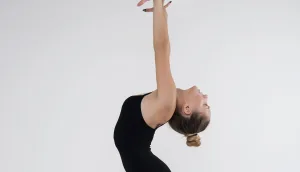Introduction:
Yoga Tips
Finding quiet times becomes more and more important for our general wellbeing in the fast-paced society we live in. Yoga is an age-old discipline that integrates physical postures, meditation, and breath awareness to provide a comprehensive strategy for attaining equilibrium. These yoga suggestions, whether you’re an experienced practitioner or a newbie, can help you improve and develop a calm mind-body connection.

Start with the Basics:
Start with the foundational positions in yoga. Strengthening and enhancing posture are two benefits of poses like Downward-Facing Dog (Adho Mukha Svanasana) and Mountain Pose (Tadasana). Gradually proceed to increasingly difficult poses as your strength and flexibility grow.
Focus on Your Breath:
The regulation of one’s breath, or pranayama, is one of the fundamentals of yoga. Focus on your breathing in every stance. Breathe deeply and mindfully to improve your body’s oxygenation and relaxation, which will benefit your general health.
Consistency is Key:
Create a regular practice schedule. Whether you practice yoga once a week or for 15 minutes every day, consistency is essential to getting the most out of it. Set attainable objectives to keep yourself motivated.
Listen to Your Body
Yoga tips is an exploration of the self. Observe how your body reacts to various positions. Adjust a pose to your comfort level if it hurts or feels uncomfortable. Seek advice on adjustments from a yoga instructor.
Explore Different Styles:
There are many different forms of yoga, and each has its own advantages. While Vinyasa yoga combines breath with movement, Hatha yoga concentrates on physical postures. Try a variety of techniques until you find the one that best suits your needs and helps you reach your fitness objectives.
Invest in Quality Yoga Gear:
A quality yoga mat and comfy clothes can greatly improve your practice. To offer stability and support during postures, spend money on high-quality equipment. A dependable mat with adequate traction guarantees a more secure and pleasurable encounter.
Mindful Meditation
Beyond just physical poses, yoga also incorporates meditation to promote mental clarity. Set aside time for mindful meditation to lower stress, enhance focus, and promote a stronger mental-physical bond.
Stay Hydrated:
For any physical exercise, including yoga, you must stay hydrated. As you practice, drink water to stay hydrated and support the detoxifying process that comes with many yoga poses.
Join a Community:
Yoga groups provide inspiration and encouragement. Joining an online group or a local class can help you stay motivated, gain advice, and share experiences. Making connections with people who share your values can improve your yoga journey as a whole.
Celebrate Progress, Not Perfection:
As yoga is a personal path, each person’s growth is different. Appreciate the little things in life, like mastering a new flexibility level or maintaining a pose for a few more seconds. Accept the process and take pleasure in the improvements to your body and mind.
Conclusion:
Your yoga practice may become more rewarding and enriching if you apply these suggestions. Recall that yoga is a path toward comprehensive well-being and self-discovery, not just a physical exercise. You may fully utilize yoga’s benefits for a more balanced, healthy existence by implementing these suggestions and including it into your daily routine. Salutations!
FAQ?
1.What is yoga, and what are the advantages for me?
Yoga is an age-old discipline that incorporates breathing exercises, bodily postures, and meditation. Enhanced strength, flexibility, less tension, and mental clarity are some of its advantages.
2.I’m not very experienced. Where should my yoga journey begin?
Start with basic stances like downward-facing dog and mountain pose. If you need help, think about enrolling in a beginner-friendly class or using online tutorials.
3.How frequently ought I to do yoga?
Maintaining consistency is essential. Whether it’s a weekly class or a daily 15-minute workout, start with a realistic schedule. You can modify later on according to your comfort level and objectives.
4.What is pranayama, and how does yoga use it?
Breath control, or pranayama, is an essential component of yoga. It strengthens the mind-body connection, encourages relaxation, and aids in respiratory function improvement.
5.Can I change a position to fit my level of fitness?
Indeed. Pay attention to your body and adjust stances accordingly. Speak with a yoga instructor to find out what adjustments are necessary for your security and comfort.
6.How can I pick the best yoga style for me?
Investigate several forms of yoga, such as Yin, Vinyasa, and Hatha. Find a style that suits your preferences and fitness objectives by attending classes or participating in online sessions.
7.What equipment is required for yoga?
Invest in a decent yoga mat with good grip and comfy clothes. These necessities improve your overall yoga experience by offering stability and support.
8.Is staying hydrated crucial when practicing yoga?
Yes, it’s important to stay hydrated. Water can help support your body and facilitate the detoxification process; drink it before, during, and after your practice.
9.What benefits can yoga offer for mental health?
Meditation, which is a component of yoga, helps with focus, stress reduction, and mental clarity. By addressing both mental and physical components of well-being, the discipline promotes a holistic approach.
10.Should I enroll in a yoga class or community?
Getting involved in a group or class can offer connection, inspiration, and support. It’s a great opportunity to get advice, exchange stories, and be motivated as you progress through your yoga practice.

